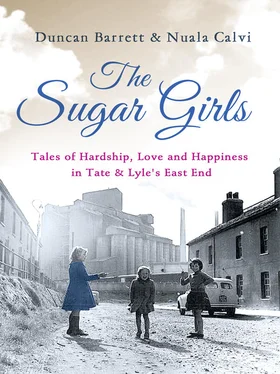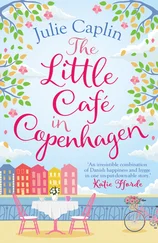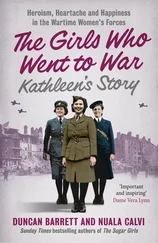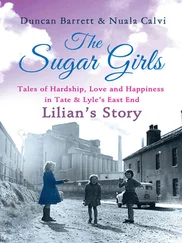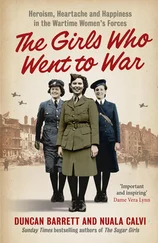Dolly took to the rough-and-tumble of rural life more than Ethel, who was forever trying to get the mud off her shoes. Always the more sensible sister, Ethel was frequently mistaken for the eldest by people who met the two of them. While Dolly soon made friends with a group of local Welsh children, Ethel was not admitted into their gang, who considered her too ‘miserable and boring’.
Dolly’s favourite new pastime was playing kiss-chase with the country boys, and Ethel could never understand how her sister, who was normally such a fast runner, would keep getting caught. Ethel always ran for her life, and no one ever seemed to catch up with her.
The country life proved quite a shock to Ethel, and not just because of the farm animals. One afternoon she was walking some way behind Dolly and the other children on their way to Sunday school, when a man leaped out of the bushes and exposed himself to her. She turned on the spot and ran home at full-pelt, screaming her lungs out all the way back up the hill to the house.
‘Dad! Dad!’ she exclaimed when her anxious father opened the front door, ‘there’s a man down there with a broom handle in his trousers!’
Jim Alleyne may have been a laid-back father, but when it came to protecting his girls he was fearsome. He legged it all the way down the hill in hot pursuit of the pervert, but by the time he got there both the man and his broom handle had retreated.
By 1942, although the war raged on in Europe, for Londoners the horrors of the Blitz seemed to be behind them. Like many families, the Alleynes took the decision to return to the East End. They found a house in Oriental Road, not far from Charles Street and still in the heart of Silvertown, and Jim got a job at the Spencer Chapman chemical factory. The girls’ old school had been levelled by the Luftwaffe, so they were sent to a makeshift classroom in the local swimming pool, which until recently had served as a morgue.
Ethel was thrilled to be admitted to a gang of local kids: Archie Colquhoun, Gladys Rawlins, Johnny Jay, Alf Gosford and Lenny Bridges. After being teased by Dolly and her friends for being boring, it felt wonderful to have a group of her own to lark about with at last.
Her favourite in the new gang was Archie, a ginger-haired boy a year older than her who lived on her new road, and who was as cheeky and playful as she was serious. As they ran about the streets together, playing gobstones and knock down ginger, Ethel realised that she was smitten.
There was just one unfortunate obstacle to her future happiness: Archie preferred her sister Dolly, whose tumbling blonde curls were a far cry from Ethel’s dark, frizzy hair. When he turned up at their door one afternoon asking if ‘Blondie’ would like to go for a walk, poor Ethel was horrified.
She wasn’t one to give up easily, however, and when Archie and Dolly left the house together she followed them in secret, borrowing her grandfather’s dog from across the road as an alibi in case her stalking was discovered. She did her best to stay well back, even though she was desperate to know what they were saying to each other, and kept a beady eye out for any hand-holding or kissing.
Ethel made it as far as the Connaught Bridge before her cover was blown. ‘Ooh, she’s jealous, Archie,’ Dolly called out, loudly enough to ensure that her sister could hear her. Ethel was mortified and hurried home, dragging the unfortunate dog behind her.
She decided the best strategy was to bide her time. Dolly had no shortage of male attention and would hopefully tire of Archie’s before long. Meanwhile, Ethel made sure to remind him of her presence. At 14, Archie had already left school and was working at the Hollis Bros timber yard. Every day, Ethel was out on the front step when he walked past on his way home for dinner.
Soon enough, Archie’s interest in Dolly waned, and one day he asked Ethel if she fancied going to the pictures together at the Imperial cinema in Canning Town. She tried not to jump for joy as she accepted the invitation.
Being alone with Ethel seemed to have a sobering effect on Archie, and around her he kept his cheekiness in check, behaving like the perfect gentleman. That night he didn’t dare do more than sneak an arm around her, even in the dark of the picture house.
In fact, after several months of courting, Archie still hadn’t plucked up the courage to kiss her. One day they were walking to the park together and chatting, when one of Ethel’s friends spotted them from across the road. ‘Just do it, Arch!’ she shouted. ‘Go on!’
Archie froze like a rabbit caught in the headlights, but he knew it was now or never. While Ethel was still chatting away he suddenly turned, grabbed her and planted a great big smacker on her lips.
‘Archie!’ she chastised him, as soon as their lips unlocked, ‘I was in the middle of a sentence!’
But after that she let him kiss her whenever he liked. By the time Ethel joined Tate & Lyle, she and Archie were inseparable.

Phut … phut … phut …
Ethel and Joanie held their breath, along with the hundred or so other inhabitants of the factory shelter, as they listened to the distinctive splutter of the doodlebug. They willed the noise to continue, knowing that if the engine cut out it meant the warhead was about to fall.
The flying bombs, launched from occupied Europe, had become a regular feature of East End life ever since the D-Day landings the previous summer. But at least the doodlebugs, which flew like regular aircraft, provided enough warning to get civilians into shelters. Far more menacing were the V2 rockets, which travelled so fast – at four times the speed of sound – that the explosion was the first anybody knew of them. The shock wave alone was enough to kill unsuspecting victims far from the point of impact, and in the aftermath of a V2 strike it was not uncommon to see a normal-looking bus full of passengers, apparently sitting patiently in their seats but on closer inspection all quite dead.
At the height of the V2 menace the Royal Docks were sustaining a strike every two or three days, but Tate & Lyle’s two factories escaped a single direct hit. Plaistow Wharf had suffered its fair share of battering earlier in the war, with 54 incendiary bombs landing inside the factory, all but one of which were quickly extinguished. There was only one fatality, a Mr Kinnison who ran into an exploding bomb on his way to a shelter. Downriver, the Thames Refinery was also hit many times, but only two minor casualties were reported.
Various rumours had sprung up to explain the firm’s apparent lucky streak. At the Thames Refinery, the most popular theory was that their iconic chimney – the tallest in the area – provided such a good landmark for the docks that the Luftwaffe were reluctant to damage it. At Plaistow Wharf, the story went that the mysterious Hesser company had begged Hitler not to damage their precious packing machines.
Fortunately for Ethel, Tate & Lyle’s good luck continued to hold out, and the splutter of the doodlebug finally began to recede into the distance. The inhabitants of the shelter were able to relax, and Ethel let out a sigh of relief.
Moments later the all-clear siren began to sound, and the men and women around her were suddenly getting to their feet.
‘Back to work then,’ Joanie said cheerfully, munching on the last of her cracker and brushing a few stray crumbs from her lap onto the floor. Ethel followed as they made their way back up the black iron stairs.
On the Hesser Floor, Joanie retreated up to the office, while Ethel returned to her machine, determined to perfect her packing technique. But a friendship had already been forged. Before they left work that day, the two young women had arranged to go to the pictures together.
Читать дальше
